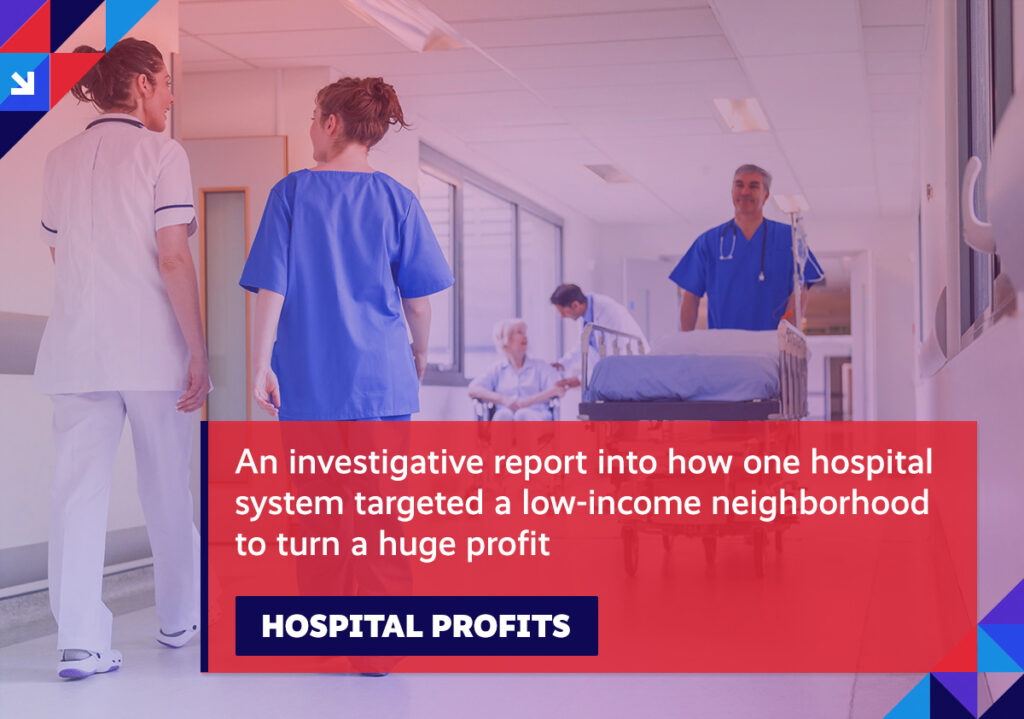Big Pharma’s patent-gaming keeps Rx prices high; meanwhile, drugmakers
announce plans to hike the price of COVID vaccines; hospitals divert primary care to
boost finances; and, private equity interests continue to alter the contours of care
delivery.
We encourage you to stay involved as implementation efforts surrounding healthcare reform progress. Visit the Health Action Network and be sure to let us know what’s on your mind.
Item of the Week

Week in Review
Patent-Gaming: As has been previously covered, drugmakers have exploited a lucrative anti-competitive price manipulation strategy known as “evergreening” to protect their profits. They accomplish this by gaming the patent system, which is theoretically set up to reward innovation by granting pharmaceutical companies market exclusivity periods, during which competing generic versions of their drugs are prohibited from being sold. But, by making minimal tweaks to their products, drugmakers are able to extend the monopolies on these products for years. A new report takes a deep dive on how this “pervasive abuse of the U.S. drug patent system is at the root of the drug pricing crisis.” According to the data, the pharmaceutical industry’s anti-competitive practices on just the top 10 best-selling drugs in this country alone costs patients billions of dollars. Specifically, the report shows that, in a little under 8 years, the U.S. will spend nearly $170 billion on only three brand-name drugs as a result of drugmakers’ patent-gaming.
Vaccine Price Hike: Elsewhere, drugmakers have made known their intent to maximize their profit potential ahead of the conversation surrounding the still ongoing COVID public health crisis beginning to pivot away from pandemic response and towards endemic acceptance. One manufacturer, Moderna, revealed in a recent presentation its estimate that the coronavirus vaccine market is worth more than $100 billion globally. With its eye squarely fixed on cashing in on this transition, the manufacturer announced plans to bring its vaccine to the commercial market with prices as high as $100. At that price point, Moderna projects nearly $13 billion in annual sales in this country alone. For reference, the company currently charges the U.S. government $15 to $16.50 per dose. And, not to be outdone, the other major vaccine maker, Pfizer, has also said it plans to charge more for its shots on the other side of the “pandemic pricing environment” with analysts projecting prices as much as four times higher than what the company is currently charging. Stakeholders immediately responded, stating that Big Pharma’s plans to hike the prices of COVID vaccines as the cost burden shifts to patients and the healthcare system is just the latest example of how the pharmaceutical industry prioritizes profits over people.
Hospital Costs: In seeking to boost their own finances, a growing number of hospitals are diverting outpatient services for their poorest patients to independent clinics they themselves set up to provide primary care. Known as federally qualified health center look-alikes, these clinics are paid significantly more by Medicare and Medicaid than they would be if they were owned by hospitals. These sites designated as “look-alikes” are also eligible for federal programs that help reduce costs and recruit providers. Even though these sites might not be part of a larger hospital system, these clinics are formed by hospitals and some even maintain locations on hospital campuses or within short walking distance. As a result, hospitals can divert patients without urgent care needs away from more lucrative emergency department settings and towards these clinics instead. This helps these large health systems reduce losses, especially from uninsured patients who might use emergency rooms for their primary care. This strategy is also beneficial for hospitals with a high proportion of patients enrolled in the Medicaid program, which generally reimburses hospitals at lower rates.

Private Equity: Between 2010 and 2019, private equity acquisitions of healthcare companies exploded from around $41 billion to nearly $120 billion each year, totaling approximately three-quarters of a trillion dollars in just a decade. This soaring investment by private equity interests has resulted in a radical reshaping of healthcare delivery in this country, as firms have looked to turn a quick profit by acquiring fee-for-service medical providers, such as specialty services and emergency transport companies. In fact, by their own track record, the short-term profit-driven business model can be as short as 3 years for a firm to enter and exit a new market, the consequences of which can be dire for patients and consumers and the availability of quality healthcare in the future. Tellingly, hospitals owned by private equity firms bring in nearly 30 percent more income by deploying a number of profiteering tactics, including cutting staff and supplies, pressuring providers to bill for unnecessary services, and up-coding claims. Experts rightly point out that the focus on achieving high returns on investment on an accelerated timeline puts private equity interests in direct conflict with the larger goal of lowering healthcare costs and generating long-term investments that improve quality and safety. This short-term focus on profits also runs the risk of further inflating healthcare costs writ large.
Spotlight

| You can keep up with the latest by following the Health Action Network on Twitter and by liking us on Facebook. And, be sure to check us out on LinkedIn, too. As always, let us know if there’s something you’d like to see covered in a future newsletter. |
